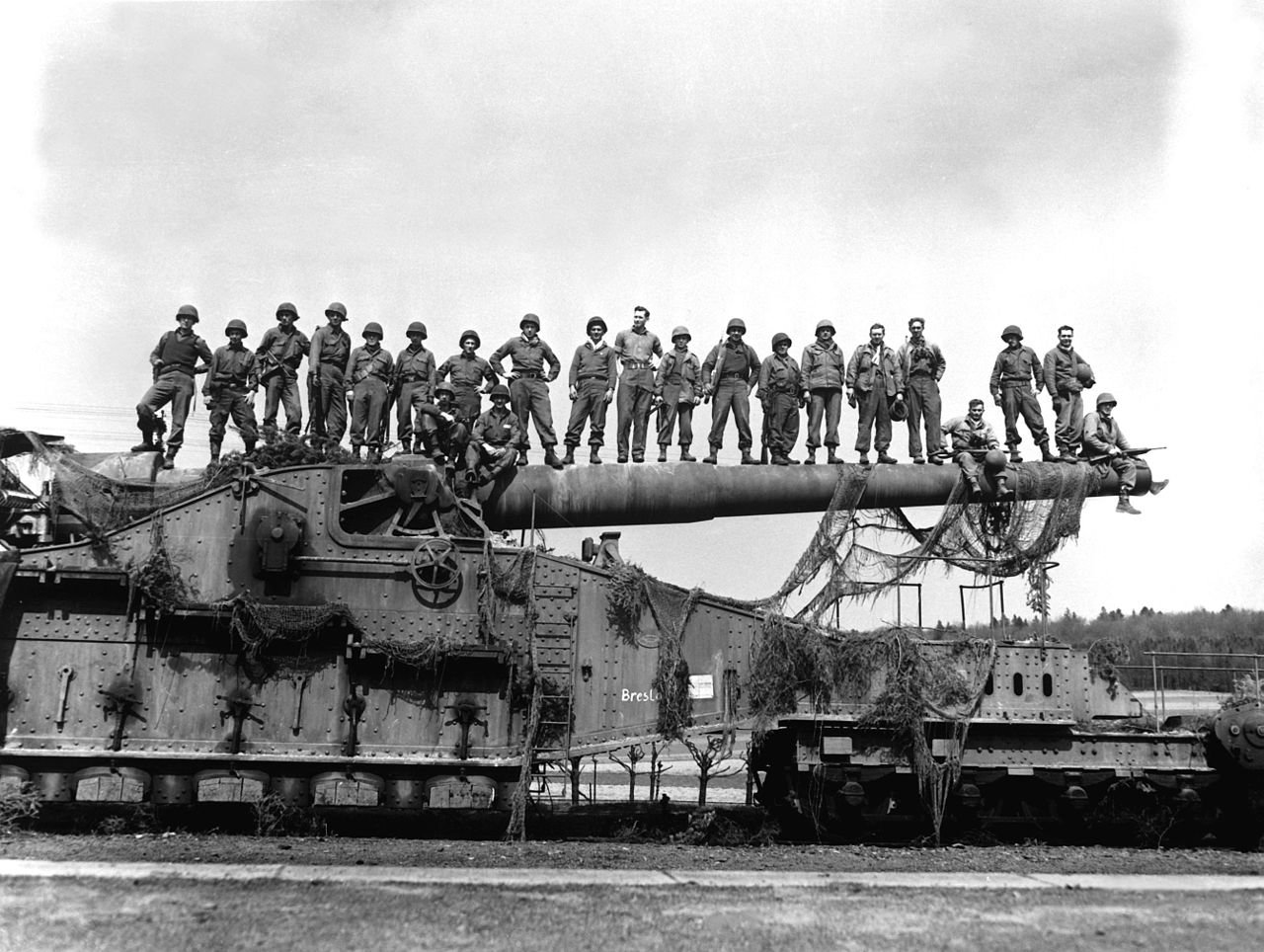
Mammoth 274-mm railroad gun Captured in the U.S. Seventh Army advance near Rentwertshausen easily holds these 22 men lined up on the barrel. Although of an 1887 French design, the gun packs a powerful wallop. April 10, 1945. Photo courtesy of Wikimedia Commons
The king of battle, in all its thunderous glory, has struck fear into the hearts of enemies for centuries. Throughout the history of warfare, different varieties of artillery weapons have been used on battlefields to great effect and have ranged from ancient and medieval siege weapons to railway guns, naval artillery, and even atomic weapons.
But which artillery pieces stand out from their peers as the most ridiculous and the most awesome? We have a few suggestions.
Little David
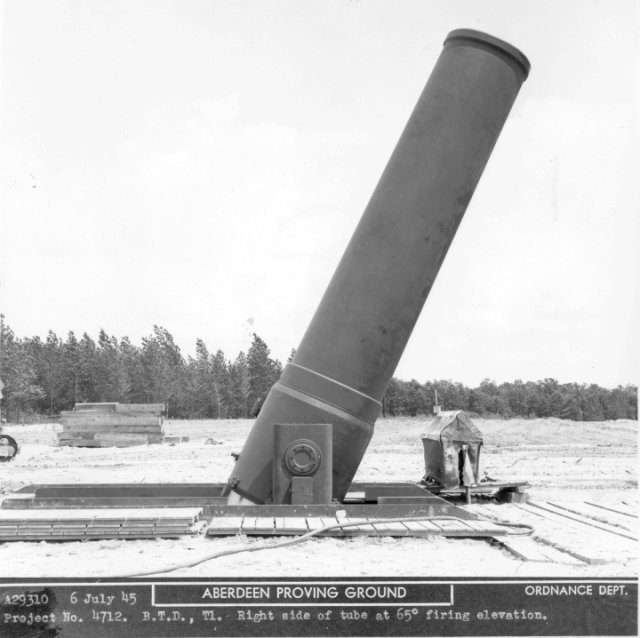
The Little David mortar has a name that can be deceiving because it is considered, along with the British Mallet’s Mortar, to be the largest-caliber gun ever made. As the United States prepared its battle plans to invade Japan during World War II, the US Army began a project to build a weapon capable of annihilating coastal and heavily fortified defenses. Little David had a 36-inch (914mm) caliber mortar and could fire 3,650 pound shells through a 22-foot muzzle at a distance of 6 miles.
Two artillery M26A1 tractors including the “Dragon Wagon” helped transport Little David to its required firing position. The behemoth mortar didn’t see combat action before Japan surrendered after two atomic bombs exploded over Nagasaki and Hiroshima, ending the war and the Little David mortar.
Trebuchet
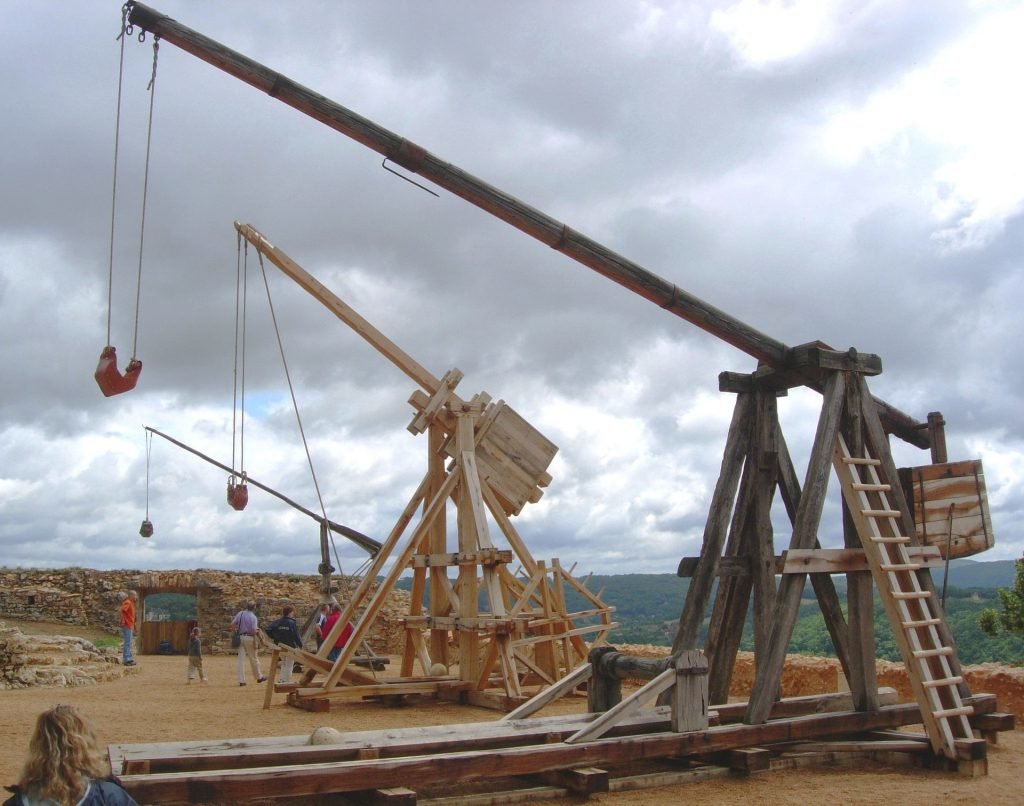
When one thinks of a medieval siege weapon, the trebuchet is at the top of the list. These compound machines use the mechanical leverage of a lever to launch 200-pound stones with a sling, which were capable of destroying the empire’s most prized fortifications. The ancient war machine was believed to be invented in China in 300 BC and was largely used by the French in Europe. These destructive weapons didn’t just hurl stones, darts, or wooden stakes through the air. Casks of burning tar, dead animals, pots of Greek Fire, and disease-infested corpses were some of the other forms of damaging projectiles seen throughout history that made both a psychological and biological impact on the enemy.
Ballista
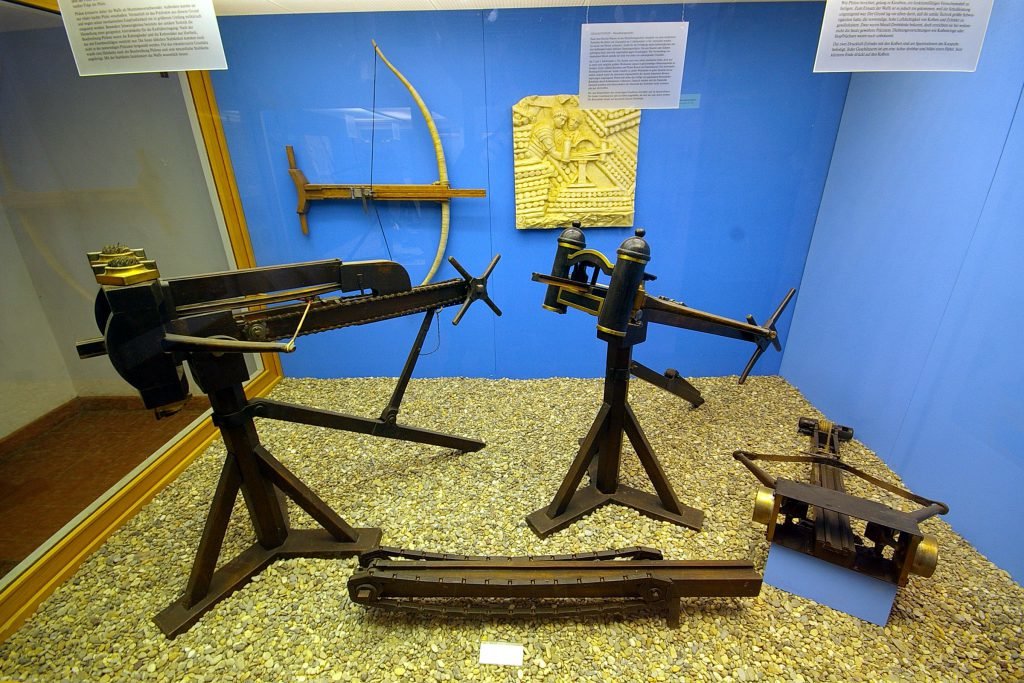
A ballista was an ancient missile (bolts) and stone throwing weapon system that was effective against guards defending their castles or fortifications during large-scale sieges. The ballista arrived on the battlefield with the Greeks in the 4th century BC, and the Roman Empire evolved the machines to be highly capable against both troops and walls.
With an effective range of 300 meters, the iron-clad darts or sharpened wooden projectiles easily pierced body armor and impaled determined defenders, both killing their fight and psychologically damaging their morale. Procopius, a Byzantine Greek scholar, described how during the 6th century ballistas were sometimes placed in siege towers, which increased their lethality against defenses.
L’Arbalète la Sauterelle Type A D’Imphy
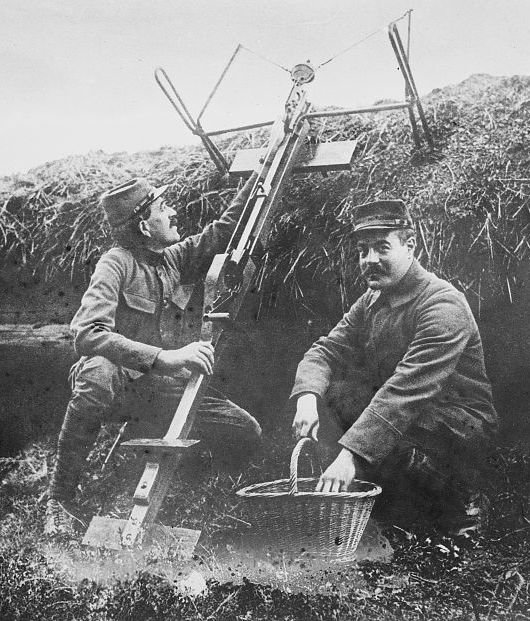
Before French and British forces employed the 2-inch Medium Trench Mortar or the Stokes Mortar upon German infantry during World War I, the allies used a grenade-throwing crossbow with an effective range of 125 meters. Elie André Broca was a French artillery officer, doctor, science professor, and inventor who manufactured his weapon system under the name L’Arbalète la Sauterelle Type A D’Imphy, more commonly known as Sauterelle, or “The Grasshopper Crossbow.”
Hand grenades exposed the thrower to sniper fire and pot-shots from infantrymen, while the Grasshopper Crossbow enabled allied soldiers to launch French F1 hand grenades and British Mills bombs from behind the cover of their trenches. The crossbow weighed 64 pounds and required one to two operators to use a hand crank similar to how bolts are loaded on modern crossbows. An experienced operator could hurl four bombs per minute.
M28/M29 Davy Crockett
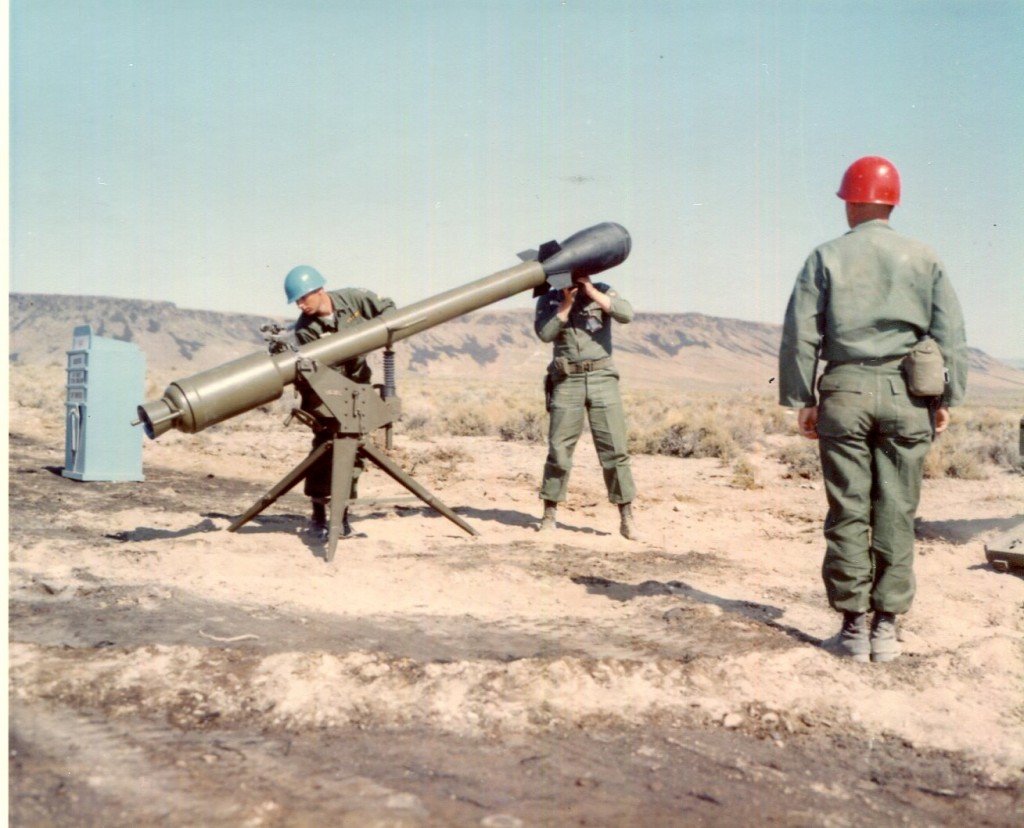
Code named Little Feller I, presidential advisor and Attorney General Robert F. Kennedy sat surrounded by US Army generals and engineers while 396 spectators watched nearby as the smallest nuclear explosion ever recorded was detonated on July 17, 1962. Kennedy peered through his protective lenses as a dust cloud appeared after the nuclear detonation occurred 2.17 miles in the distance.
In the midst of the Cold War, the US military frequently tested new capabilities at the Nevada Test Site. One of these mechanisms was the M28/M39 Davy Crockett recoilless rifle weapon system. A three-man crew operated the weapon the same way a typical mortar crew would operate in the field, except instead of a mortar shell, the Davy Crockett fired a nuclear projectile carrying the W54 nuclear warhead, which had the explosive equivalent of 10 to 20 tons of TNT. The nuclear capability was carried by small teams on the ground while deployed to Europe and provided a nuclear security blanket in case war with the Soviet Union ever broke out.
M65 Atomic Cannon: “Atomic Annie”
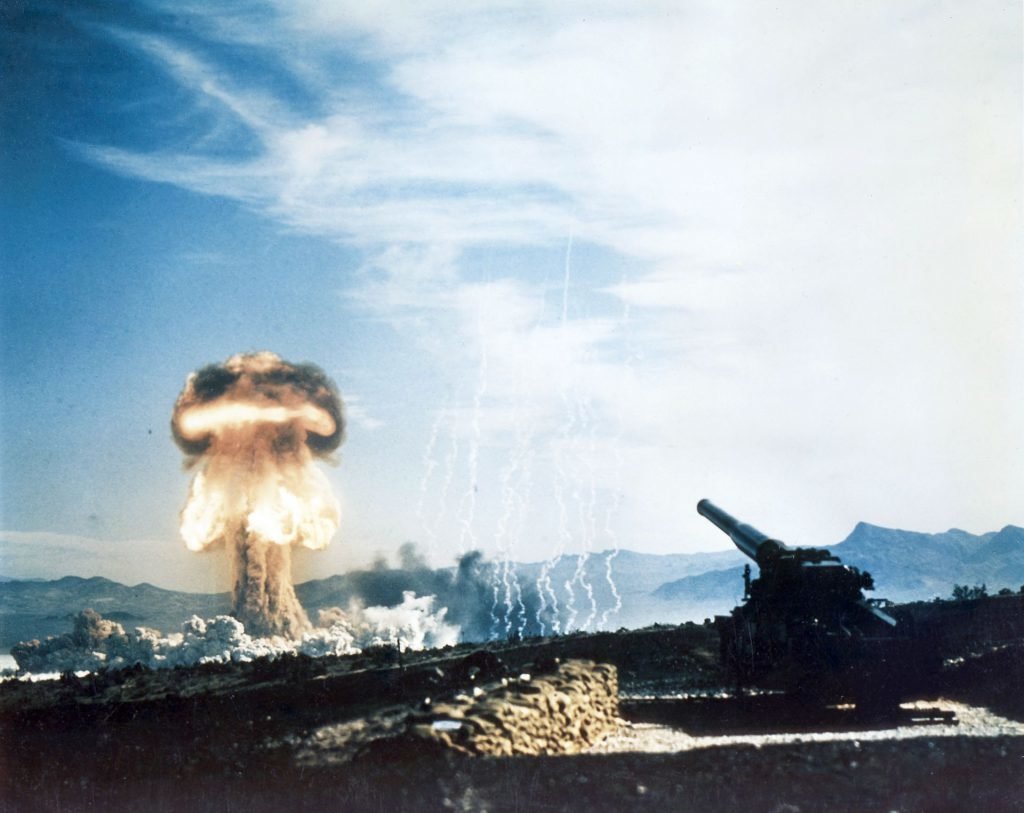
The M65 Atomic Cannon, better known as “Atomic Annie,” was a towed artillery piece that fired the W-9 15-kiloton atomic 280mm Projectile T124. The 47-ton weapon system had a remarkably fast emplacement rate, taking only 12 minutes to ready and fire and 15 minutes to make ready for traveling to the next target. The maximum range of Atomic Annie was between 20 and 35 miles, and it was operational between 1953 and 1963. The only nuclear detonation occurred at the Nevada Proving Ground during Operation Upshot Knothole on May 25, 1953. The device traveled a distance of 7 miles and detonated 524 feet above the ground. The testing was captured on video for archival records. Atomic Annie was never used during combat operations.
BL 18-inch Mk I naval gun
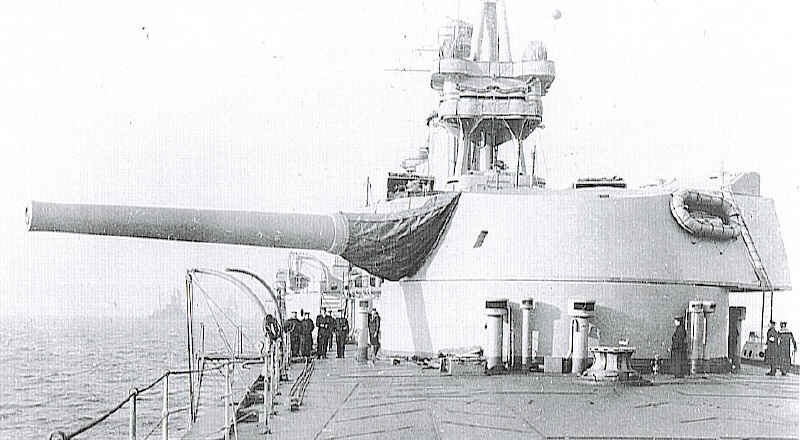
The largest and heaviest weapon ever used by the British was the BL 18-inch Mk I naval gun. The initial design was geared toward arming the HMS Furious to make it capable of providing naval support to smaller vessels in the Baltic Narrows during the invasion of Germany in World War I. However, the warship lacked defenses and was considered a liability rather than an asset. During test trials of the 18-inch/40 (45.7 cm) turret gun, the ship couldn’t handle the overpressure when the gun fired. In theory, having a large naval weapon was a necessity, but since it didn’t pass the required tests, the HMS Furious was converted into an aircraft carrier.
The Royal Navy recognized they had a capability but had no sure way to apply it. On Sept. 28, 1918, the HMS General Wolfe changed these perceptions when it fired on a railroad bridge at Snaaskerke at a distance of 36,000 yards — the longest range any Royal Navy vessel has ever engaged enemy personnel up to that point in history.
Karl-Gerät
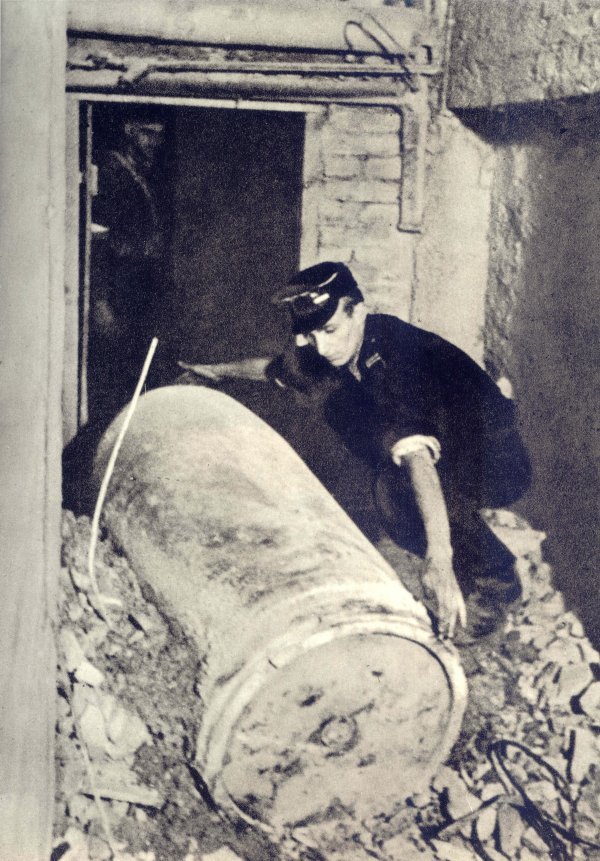
The Karl-Gerät was another siege weapon in the Nazi Germany inventory and was deemed the largest self-propelled gun in the history of warfare. The 273,374-pound super weapon could be moved across Europe during World War II through the use of European rail networks. When the weapon reached its destination, it was detached from its special transportation car and set up facing its target — usually a city or town. The Karl was used during the Battle of Sevastopol and along both the eastern and western fronts. It had its fair share of mechanical and technical problems but still crippled buildings in the Warsaw Ghetto during the Warsaw Uprising. The historic Battle of the Bulge might have turned out different if the Karl wasn’t strafed and damaged by allied aircraft orbiting above.
The Dictator
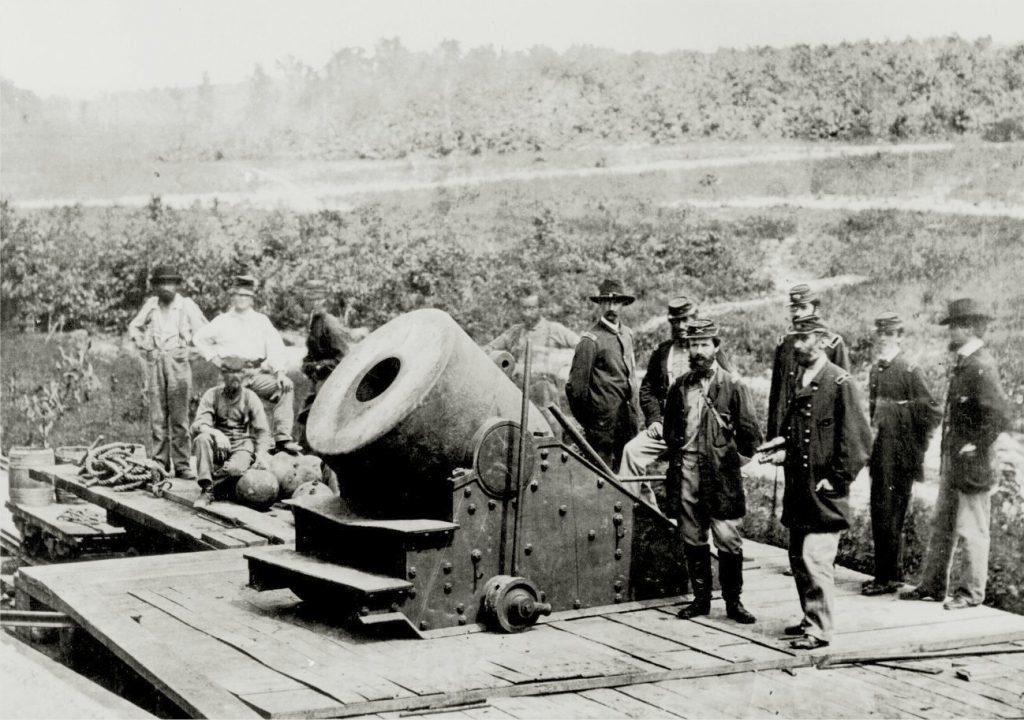
During the American Civil War, the Union built a makeshift railroad battery of their own that tipped the scales at 17,120 pounds. They called it the “Dictator,” and it was used during the 1864 Siege of Petersburg. The Dictator was secured on a reinforced railway car and could fire 200-pound shells at a 45-degree angle up to 4,235 yards.
“This 13 inch mortar was used principally against what was known as the ‘Chesterfield Battery,’ which from the left bank of [the] river, completely enfiladed our batteries on the right; all our direct fire seemed to have no effect,” according to a 1st Connecticut historian. “From this mortar was the only fire that seemed to hold the battery in check.”
Schwerer Gustav
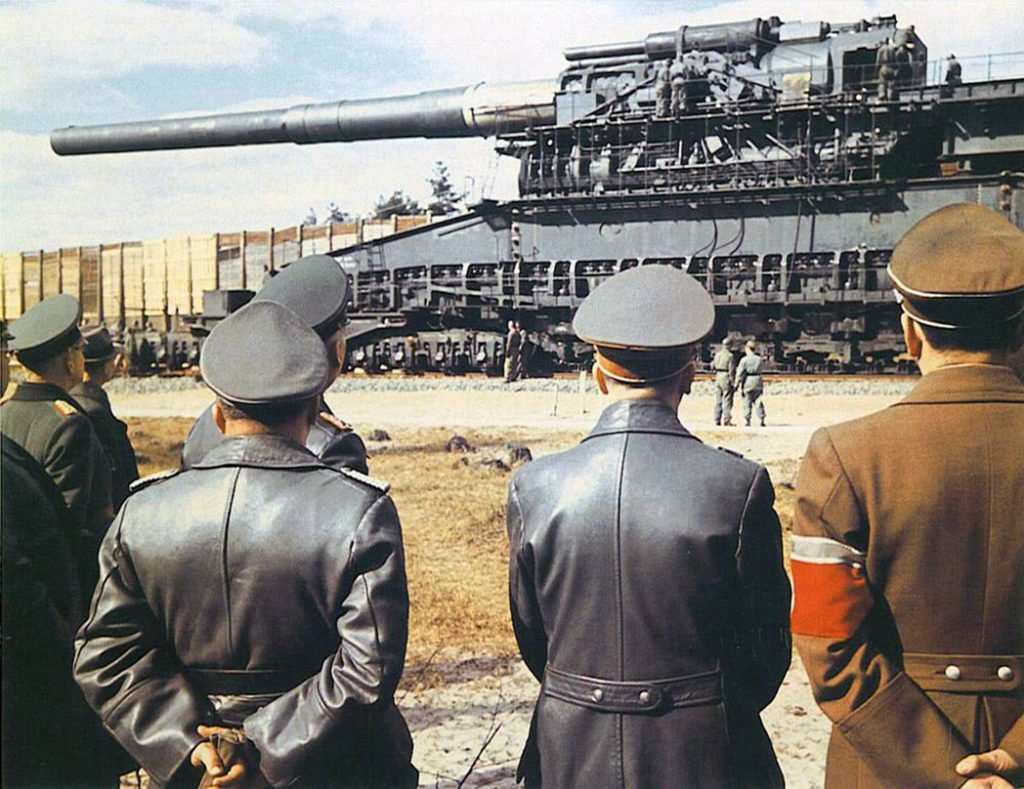
The Nazi regime had several advanced weapons within its arsenal, and Adolf Hitler’s own Schwerer Gustav, a super weapon and railway gun, was the largest weapon ever built. The Nazis first used the cannon during the Battle of Sevastopol in 1942. The Schwerer Gustav required a crew of 2,000 people to operate and took four days of maintenance before the enormous railway gun could be used. More than 300 800mm shells decimated the Crimean city and, although it was originally created to destroy the Maginot Line — a defensive fortification deemed impregnable — the Schwerer Gustav was ultimately never needed after a successful Blitzkrieg campaign.

Matt Fratus is a history staff writer for Coffee or Die. He prides himself on uncovering the most fascinating tales of history by sharing them through any means of engaging storytelling. He writes for his micro-blog @LateNightHistory on Instagram, where he shares the story behind the image. He is also the host of the Late Night History podcast. When not writing about history, Matt enjoys volunteering for One More Wave and rooting for Boston sports teams.
BRCC and Bad Moon Print Press team up for an exclusive, limited-edition T-shirt design!
BRCC partners with Team Room Design for an exclusive T-shirt release!
Thirty Seconds Out has partnered with BRCC for an exclusive shirt design invoking the God of Winter.
Lucas O'Hara of Grizzly Forge has teamed up with BRCC for a badass, exclusive Shirt Club T-shirt design featuring his most popular knife and tiomahawk.
Coffee or Die sits down with one of the graphic designers behind Black Rifle Coffee's signature look and vibe.
Biden will award the Medal of Honor to a Vietnam War Army helicopter pilot who risked his life to save a reconnaissance team from almost certain death.
Ever wonder how much Jack Mandaville would f*ck sh*t up if he went back in time? The American Revolution didn't even see him coming.
A nearly 200-year-old West Point time capsule that at first appeared to yield little more than dust contains hidden treasure, the US Military Academy said.












